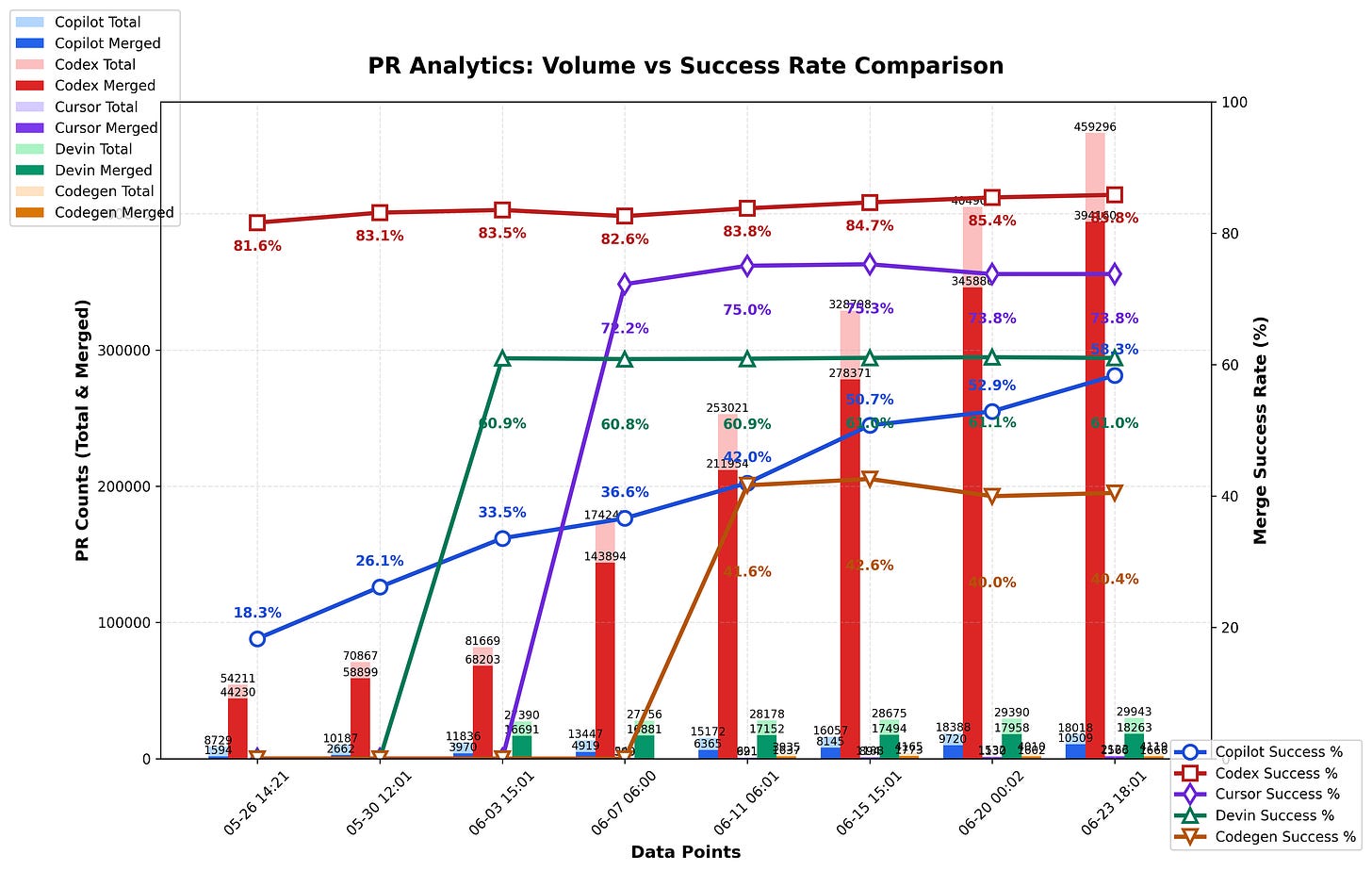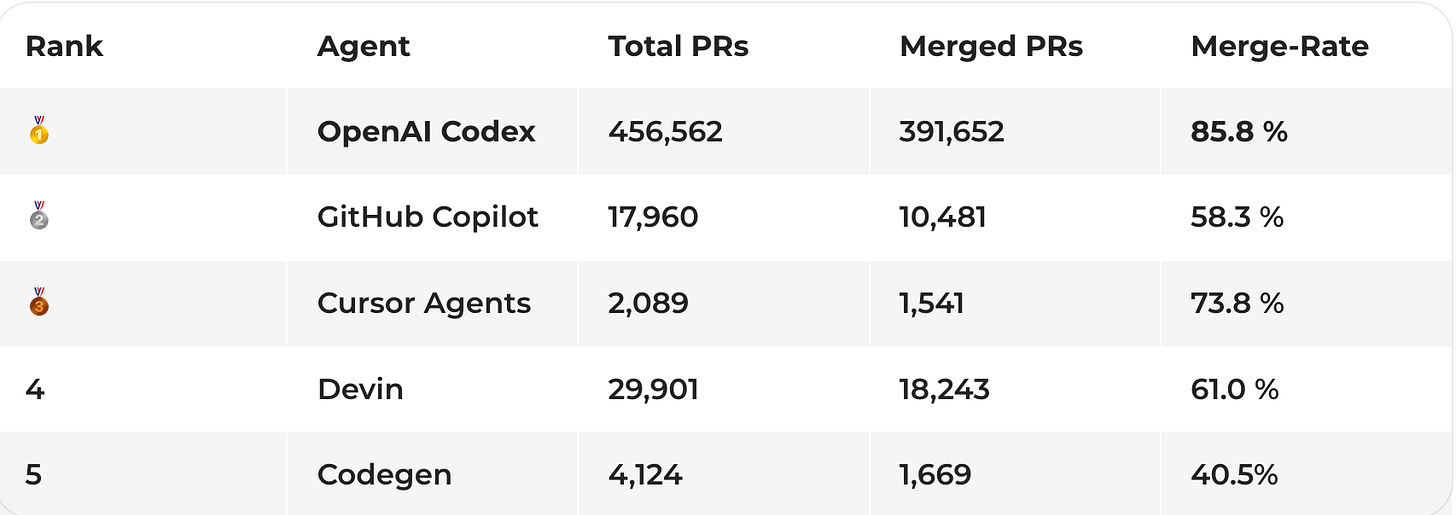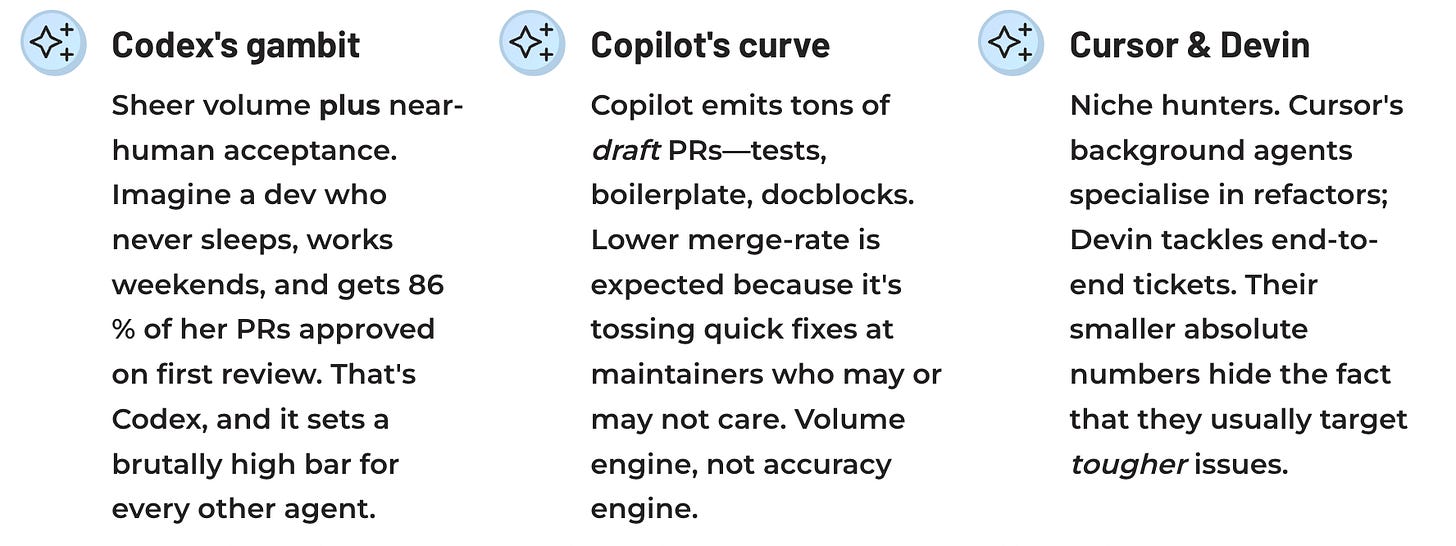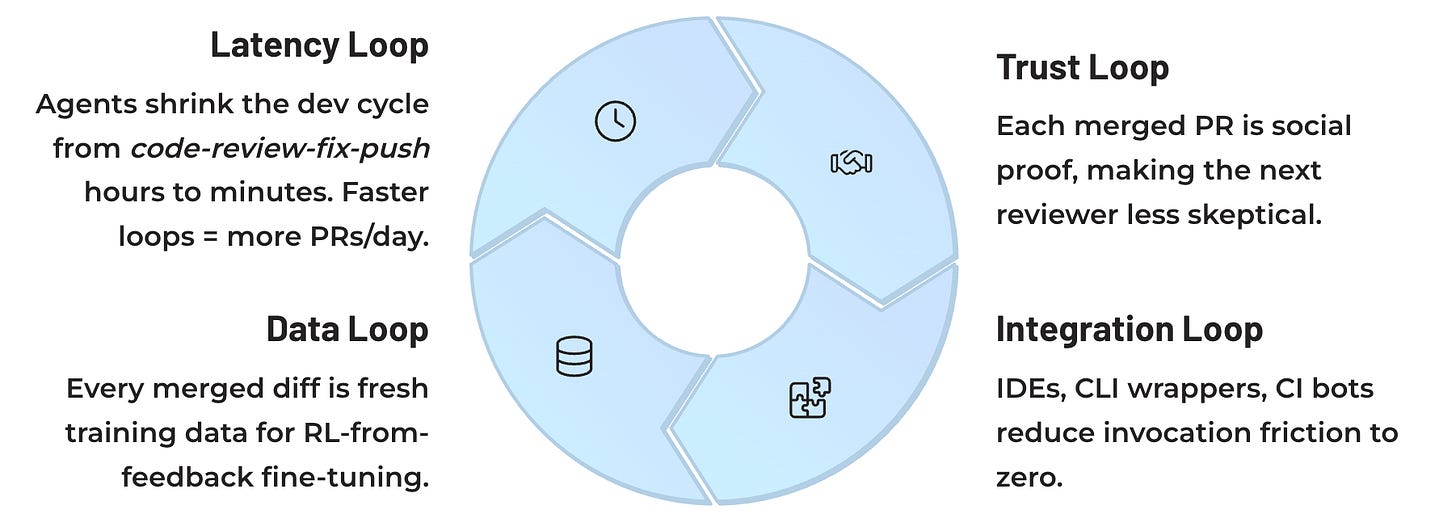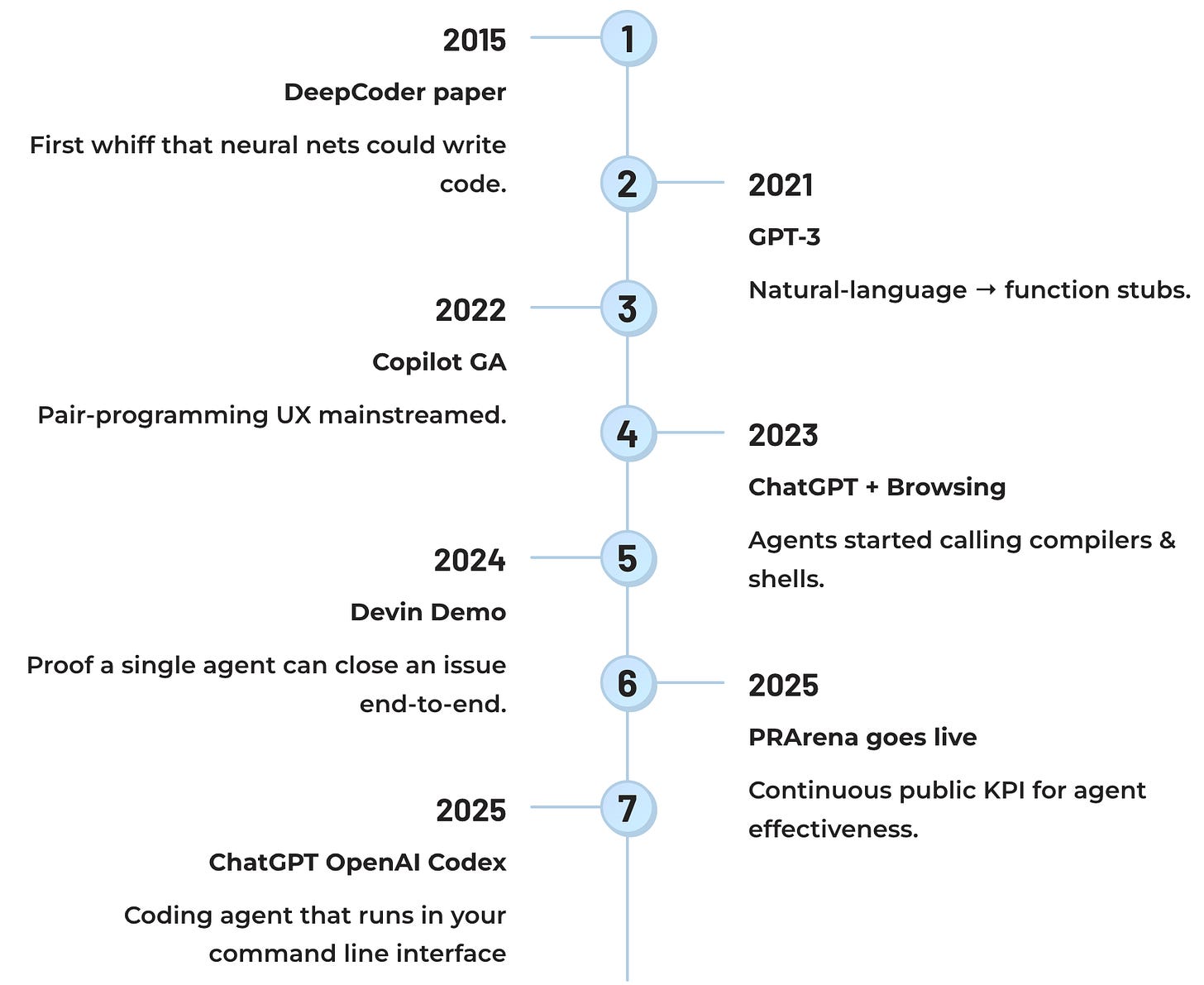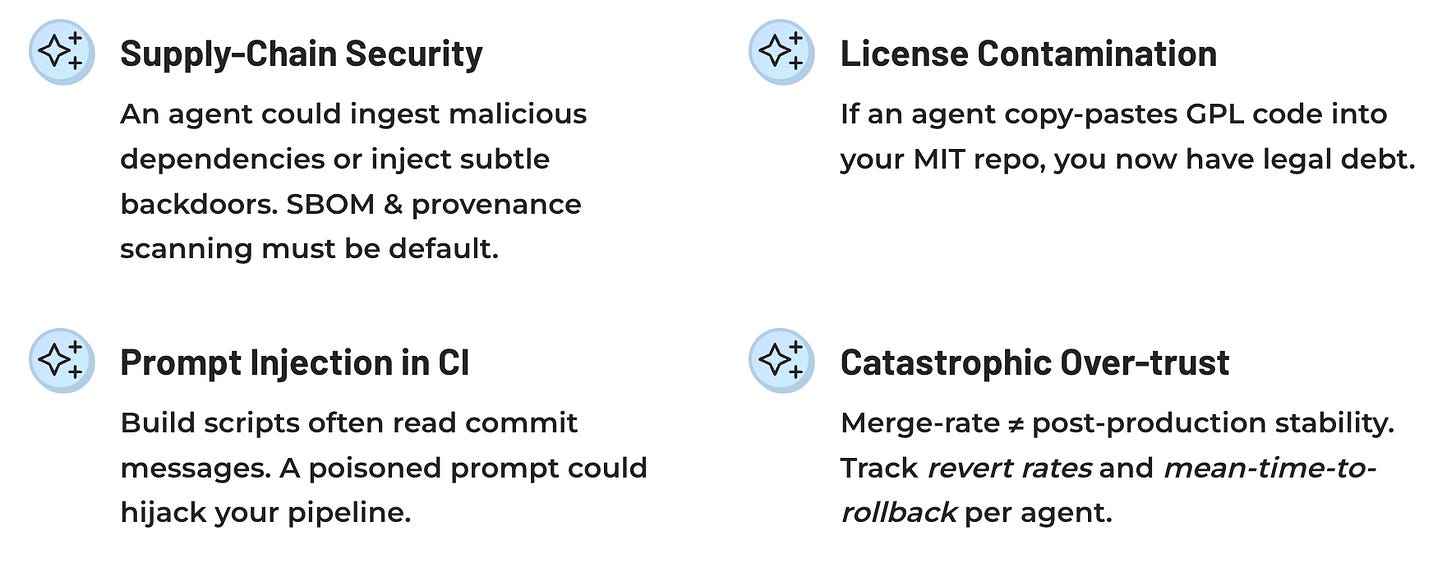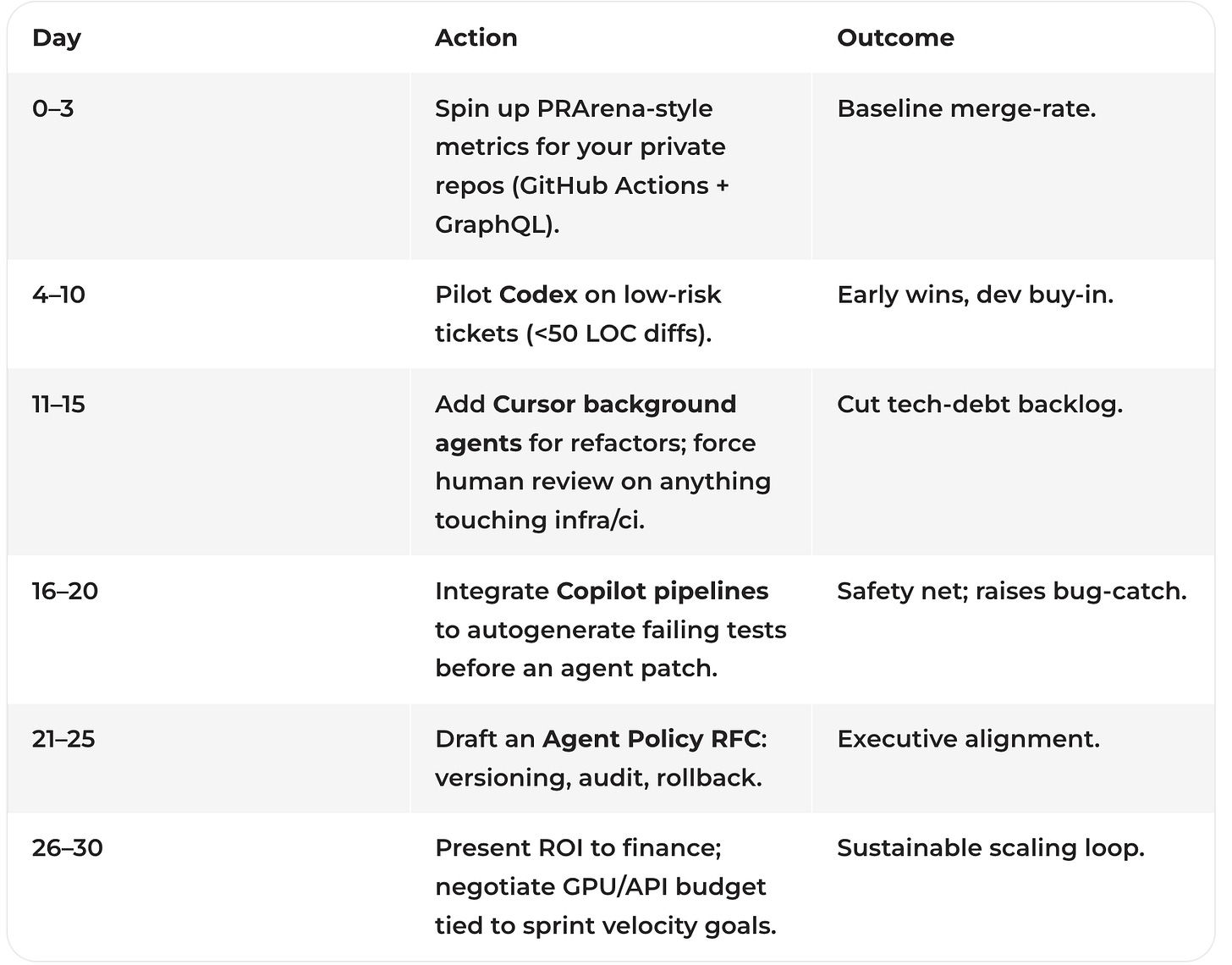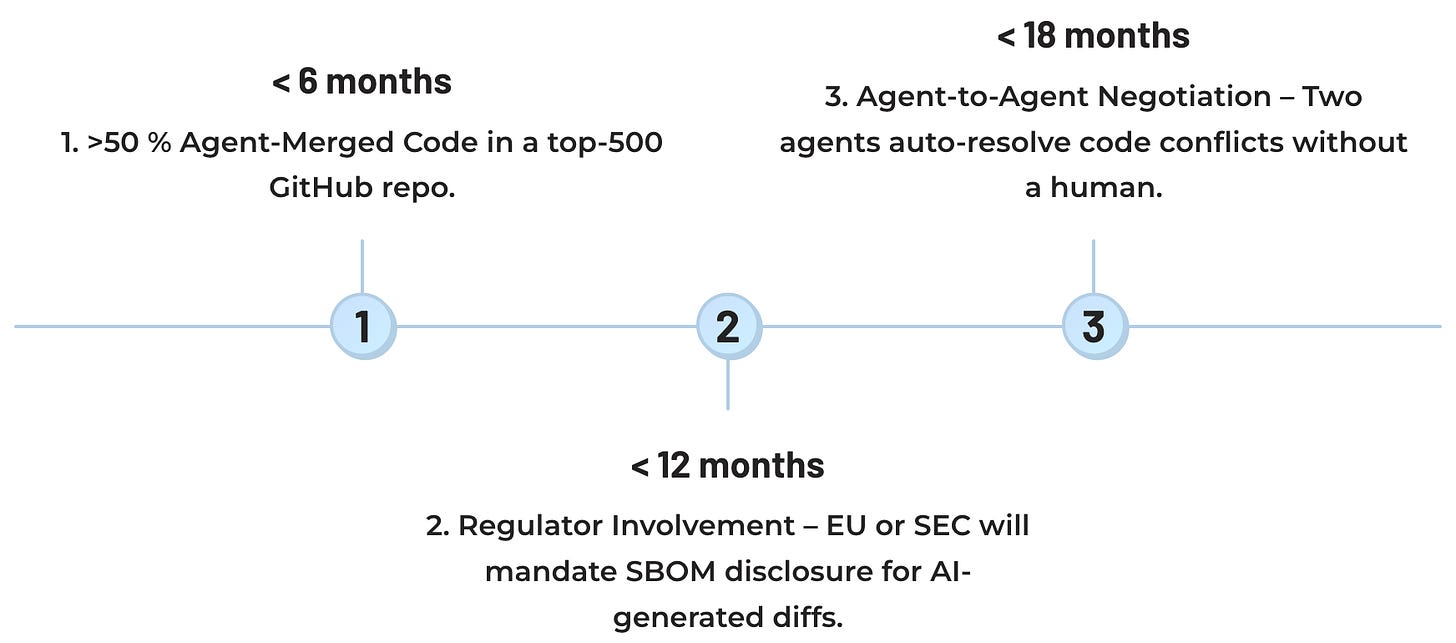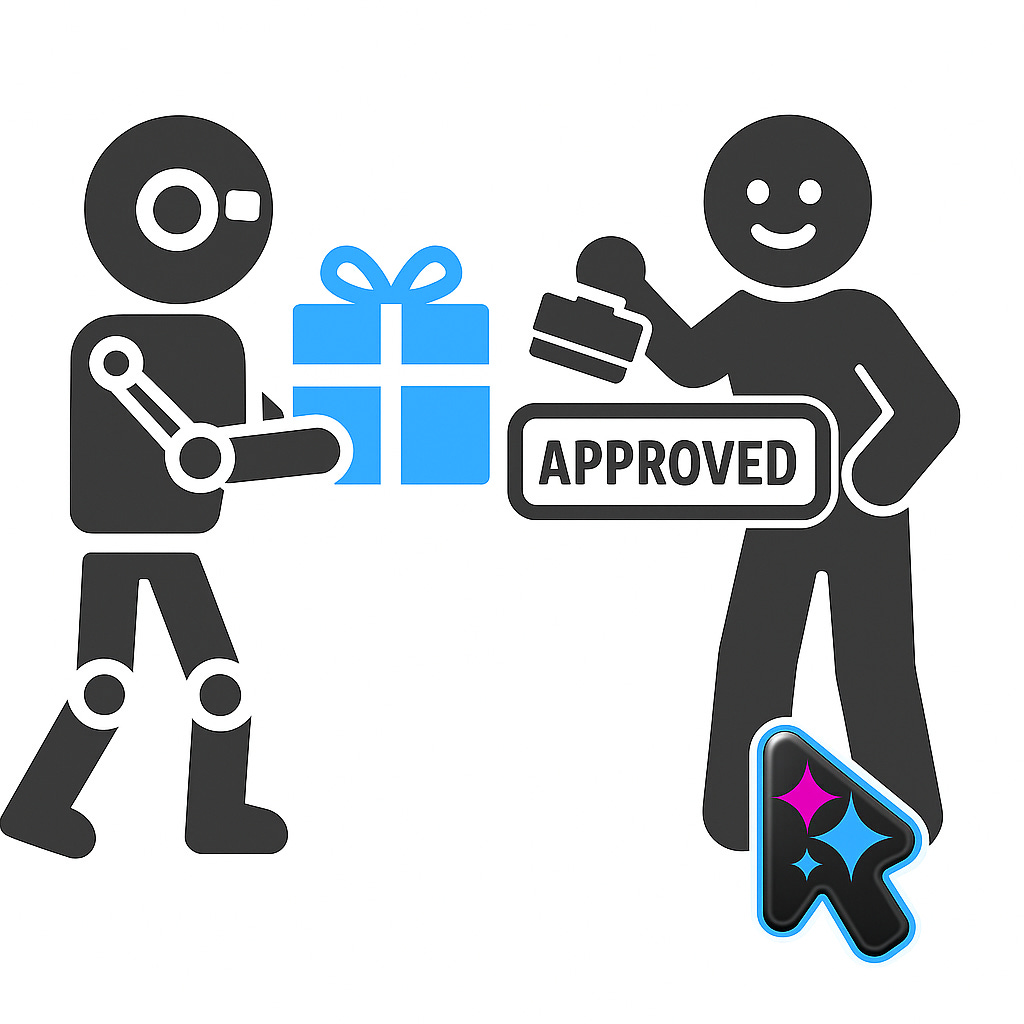Why Your Next Junior Dev is a JSON Payload
The PRArena numbers that make human-only sprint planning obsolete.
Hey Takers,
There’s a quiet counter on the internet that just flipped from “curiosity” to “tectonic shift.”
Tucked away on PRArena.ai is a live dashboard that counts how many pull-requests (PRs) the big autonomous coding agents open and how many get merged into public GitHub repos. Below is the latest read-out:
At first glance you see pastel bars and polychrome lines. Look closer:
456 k PRs opened by OpenAI Codex.
86 % of them merged.
Codex alone now accounts for ~10 % of all merged PRs on public GitHub repos.. GitHub PRArena.ai
That means hundreds of thousands of code edits—production quality, CI-green, reviewed by humans—are already agent-written. The era of “agents as junior devs” isn’t coming; it happened while we were arguing on X.
Pull-Requests: The Real-World KPI
Benchmarks and HackerNews demos are fun, but PRs are software's GDP:
A merged PR implies:
1. Functional correctness (tests pass).
2. Style & lint compliance (the nit-pickiest guard rails).
3. Reviewer trust (human reputational risk).
4. Business impact (code lands in prod).
That bundle is impossible to spoof at scale, which makes PR counts the highest-signal metric for agent usefulness.
De-compressing the Leaderboard
How PRArena Scrapes the Planet
Uses GitHub GraphQL API to query PR metadata every three hours.
Detects agent identity by branch-name heuristics (codex-/, copilot-/, etc.) and commit-message fingerprints.
Cross-checks PR status (open, merged, closed) and contributor handle.
Aggregates into a time-series back-filled to May 2025.
Open-source mirror here: https://github.com/aavetis/ai-pr-watcher
Caveats:
Private repos & enterprise GitHub Cloud aren't included—the real agent footprint is larger.
Agents without unique branch prefixes (e.g., Anthropic's Claude Code) are under-counted.
Merge-rate doesn't measure post-merge hot-fixes. A sloppy agent could slip untested code that gets reverted later.
The Four Loops Driving Exponential Growth
Together they create the hockey stick you see on PRArena: Codex PRs up 8× in 30 days, Copilot up 4×, Cursor up 3×.
Zooming Out: A 10-Year Timeline to Contextualise
History's lesson: every 12–18 months the ceiling becomes the new floor. PRArena marks the spot where "agents write PRs" stops being a headline and becomes the status quo.
Economic Shockwaves
For Engineering Managers
Expect head-count assumptions to skew. Planning velocity shifts from "how many dev-hours?" to "how many review hours + GPU minutes?".
For Product Owners
The bottleneck moves from coding to ambiguity resolution. Feature specs must pre-answer the questions an agent would've pinged a human for.
For Finance & Ops
Agent usage converts CAPEX (head count) into OPEX (GPU + API). Variable cost, but also variable throughput. Budgeting models need new dials.
For Investors
Traditional "developer moats" weaken; integration moats strengthen. The winners will own workflow orchestration layers—think agent routers, meta-controllers, policy firewalls.
Risks & Dark Corners
Governance & Policy Playbook
Label Every Agent Commit – Git config hooks that tag Agent-Name and Model-Hash.
Set Merge Budgets – e.g., no more than 40 % of weekly merges may bypass a two-person human review.
Audit-After-Merge – Nightly static-analysis on all agent PRs; auto-open issues for smell violations.
Red-Team the Agent – Quarterly sprint where security engineers attack your agent's prompts and sandbox.
Pro tip: treat your agent like any external vendor—SLAs, logging, incident protocols.
Roadmap: How to Ride the Wave in 30 Days
Looking Forward: The Three Thresholds & My Predictions
*SBOM (Software Bill of Materials) is a comprehensive inventory of all components used to build a software application
The speed isn't linear; each new threshold makes the next easier, thanks to the loops we covered earlier.
The Neural Take
The PRArena chart is not just a curiosity metric—it's the Nasdaq ticker for the AI-developer economy. If you run a product org, your velocity targets, risk models, and even hiring pipelines will bend to these curves sooner than you expect.
The question is no longer "Will agents ship code?" It's: Who will master the orchestration layer first—and who will drown in their own unreviewed diffs?
My advice: stand up your private PRArena, pilot, measure, iterate. Then email me what happened—I'll feature the boldest experiments in a future issue.
See you in the code review queue,
— Michal @ The Neural Take
P.S. The live dashboard is free at prarena.ai if you want to watch the lines climb in real time.



